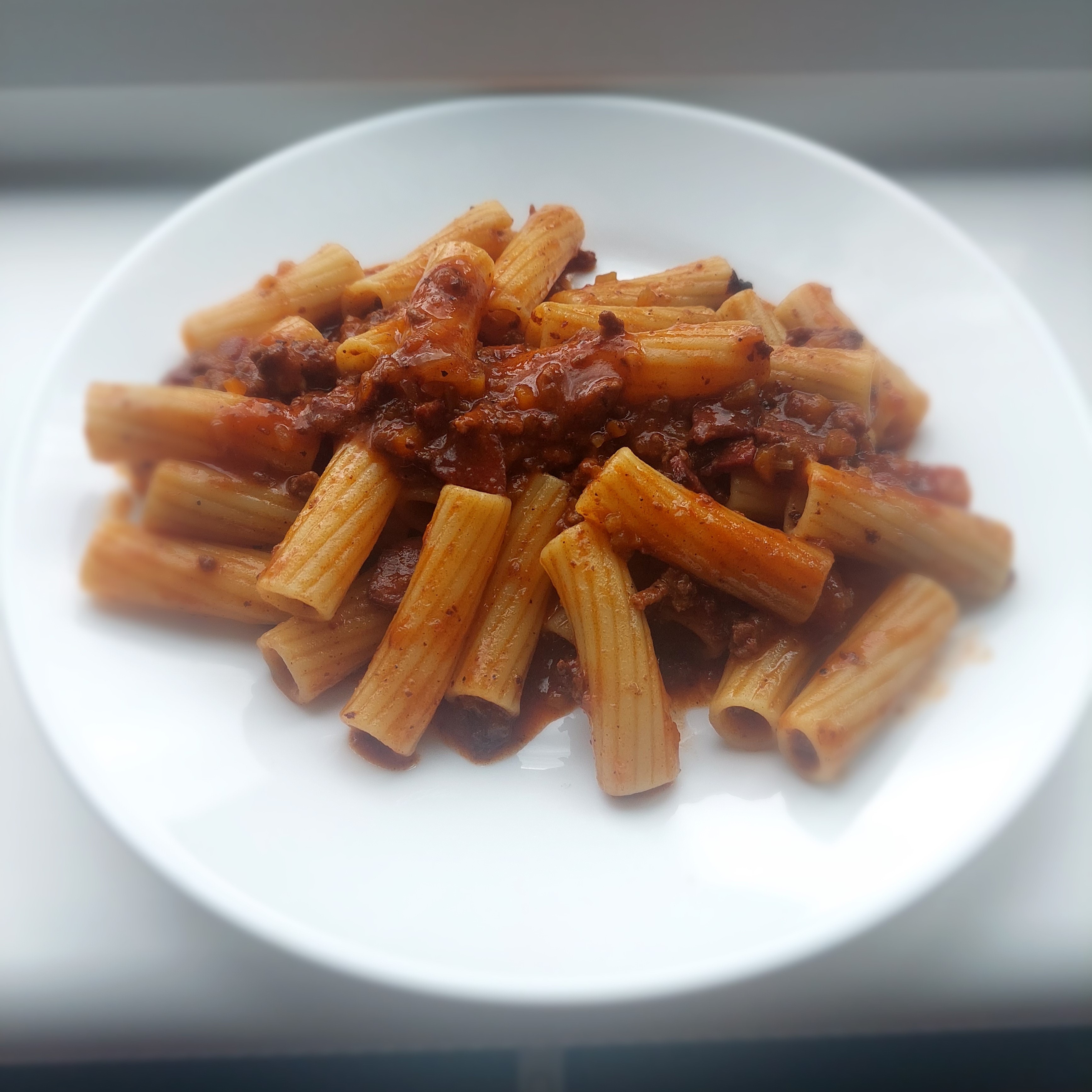 View Gallery
1 photo
View Gallery
1 photo

The tale behind the world’s most famous pasta sauce
Everyone knows Bolognese, the quintessential pasta sauce. What many people don’t know is that most foreign incarnations of this dish bear little resemblance to the original. In fact, Bologna takes their famous sauce so seriously that there is an official recipe outlining the required ingredients and quantities characterising true ‘Ragù Bolognese’. Any divergence from this recipe means that your sauce may still be ragù, but it is not Bolognese. This begs the question, what is ragù?
Ragù is essentially Italian for ‘meat sauce’ and is typically served with pasta. The term ragù likely derives from the French dish ragoût (same pronunciation), which is used to describe a meat stew. Ragoût may have been popularised in Northern Italy by the French during the Italian campaigns of the French Revolutionary Wars (1792-1802), led by Napoleon Bonaparte. However, ragù had some presence in Italy even prior to this, as evidenced in Vincenzo Corrado’s 1773 cookbook titled ‘Il Cuoco Galante’. These proto-ragù tended to consist of a mix of meats (or sometimes fish), vegetables, herbs, broth, lemon, and was not served with pasta.
The first historical appearance of Bolognese is found in Pellegrino Artusi’s ‘La Scienza in Cucina E L’arte di Mangier Bene’ in 1891. Although this recipe certainly lays the foundation for modern Bolognese sauce, it was slightly different. Most notably, Artusi’s ‘Macaroni alla Bolognese’ was a white ragù, meaning that it contained no tomatoes. Ingredients and cooking techniques continued to evolve throughout the 20th century.
On the 17th of October 1982, The Italian Academy of Cuisine submitted an official recipe for Ragù Bolognese in the Bologna Chamber of Commerce. This recipe was then updated on the 20th of April 2023.
Why ragù typically is not kosher
Ragù is typically not kosher for two reasons. Firstly, the use of pork. For example, Bolognese often contains pancetta. It is also common for ragù to contain pork sausages or pork mince. Secondly, the mixing of milk and meat. Many ragù such as Bolognese use milk and sometimes butter to increase its richness. Parmigiano Reggiano is also a common seasoning. Since ragù is defined as a meat sauce, a kosher ragù must omit these dairy products.
Kosher ragù attempts to preserve the cooking techniques and ingredient types used in Bolognese sauce. Pancetta subtly enhances the flavour of Bolognese through the aromatics added to it when cured. This recipe substitutes pancetta for pastrami since both are cured meats. Additionally, almond milk is used as an alternative to full-fat cow’s milk. The type of dairy-free milk used here does not make a big difference since the primary goal is not to add flavour, but instead to create a silkier and creamier texture.
By definition, kosher ragù is not classic Bolognese. However, it is hoped that this unique creation is delicious in its own right.
A note on ingredients and substitutions
Generally with minced with minced meat, the higher in fat the tastier. So if flavour is the only priority, go for about 20% fat (which is what this recipe assumes). If I’m making this Ragù for a casual weeknight meal or to bring to work though, I’ll usually use lean mince.
If unable to find pastrami, use either beef or lamb minced meat, kosher sausage (e.g., Merguez, boerewors) or cured deli meat (e.g., brisket).
A note on chicken liver. This recipe assumes your chicken is liver is already koshered and cooked. The process of koshering chicken liver only takes about 15 minutes. However, it involves many steps so in order to not overcomplicate the recipe it hasn’t been included in this recipe. If you’d like to learn how to do this at home, visit my recipe for chopped liver. Speaking of chopped liver, that would be a delicious substitution for regular chicken liver in Kosher Ragù. But keep in mind that would add a lot of fat, so in this case also go for a leaner minced meat. If you want to avoid chicken liver altogether, substitute for dried porcini mushrooms or simply omit.
Almond milk may be substituted for any lactose-free milk. Coconut milk specifically makes a great addition because it is the fattiest out of all the dairy-free milks. It is also the most distinct in flavour, which will likely be noticeable in the final dish.
If you don’t have fresh homemade stock on hand, I would recommend using stock cubes or powder. Usually store bought liquid is stock is much more expensive and often lacking in flavour. It can be hard to directly substitute these ingredients, so start off with one cube or one teaspoon and keep tasting for seasoning until you reach the flavour you like.
Traditionally Ragù Bolognese is served with fresh tagliatelle pasta. For this reason, fresh tagliatelle is featured in the official recipe. Personally, I usually use dried penne because it is the most convenient.
Finally, the recipe recommends using a food processor to cut up the pastrami, onion, celery and carrots, as well as a blender for the chicken livers. If you do not want to add an extra half hour to the recipe, are making a large batch, or are not confident enough in your chopping skills to get extra fine dices, these methods are for you. However, it does change the texture in that these ingredients completely melt into the sauce. Some might prefer this, but others might like some bites that has a distinctive yet subtle taste of carrot or celery. Do what suits your taste buds.
Storage
Kosher Ragù keeps in the fridge for about 5 days, and in the freezer for about 3 months.
Learn about Jewish history in Bologna
Comunitae Braica Bologna. (n.d.) Brief history of the Jewish community. https://www.comunitaebraicabologna.it/en/jewish-bologna/community/1311-brief-history-of-the-jewish-community
Museo Ebraico di Bologna. (2019, September 5). Jewish path of Bologna. https://www.museoebraicobo.it/en/jewish-museum-of-bologna/jewish-path-of-bologna
Visit Jewish Italy. (n.d.) Bologna. https://www.visitjewishitaly.it/en/bologna/
Sources
Accademia Italiana Della Cucina. (2023, April 20). Italian Academy of Cuisine registers updates recipe for true ragù alla bolognese. https://www.accademiaitalianadellacucina.it/en/notizie/notizia/italian-academy-cuisine-registers-updated-recipe-true-rag%C3%B9-alla-bolognese
Artusi, P. (1891). La scienza in cucina e l’arte di mangiar bene.
Corrado, V. (1773). Il cuoco galante.
Cesari, L. (2018, October 7). Origine e storia dei due ragù (napoletano e bolognese). Gambero Rosso. https://www.gamberorosso.it/notizie/articoli-food/origine-e-storia-dei-due-ragù-napoletano-e-bolognese
Del Conte, A. (1994). Pasta-lover’s cookbook. Sainsbury’s.
Goldstein, J. (2001). Enoteca: Simple, delicious, recipes in the Italian wine bar tradition. Chronicle Books.
Hazan, G. (2005). How to cook Italian. Simon & Schuster.
Italia Squisita. (2018, October 19). Bolognese sauce: 2 recipes by Aurora Mazzucchelli, Gianni D’Amato e Dario Picchiotti [Video]. YouTube. https://www.youtube.com/watch?v=oomJC1sWyfs
Nonna Tina. (2022, October 21). Come nasce il Ragù alla Bolognese. https://www.nonnatina.it/come-nasce-il-ragù-alla-bolognese/
Kosher Ragù: Bolognese Reimagined
A hearty dish full of richness and complexity. Make bigger batches on a Sunday and freeze. Defrost for easy weeknight meals.
Ingredients
Ingredients
Instructions
Preparation
-
Pastrami and Vegetables
Cut into rough chunks, then blitz in food processor until the consistency is similar to minced meat to minced meat
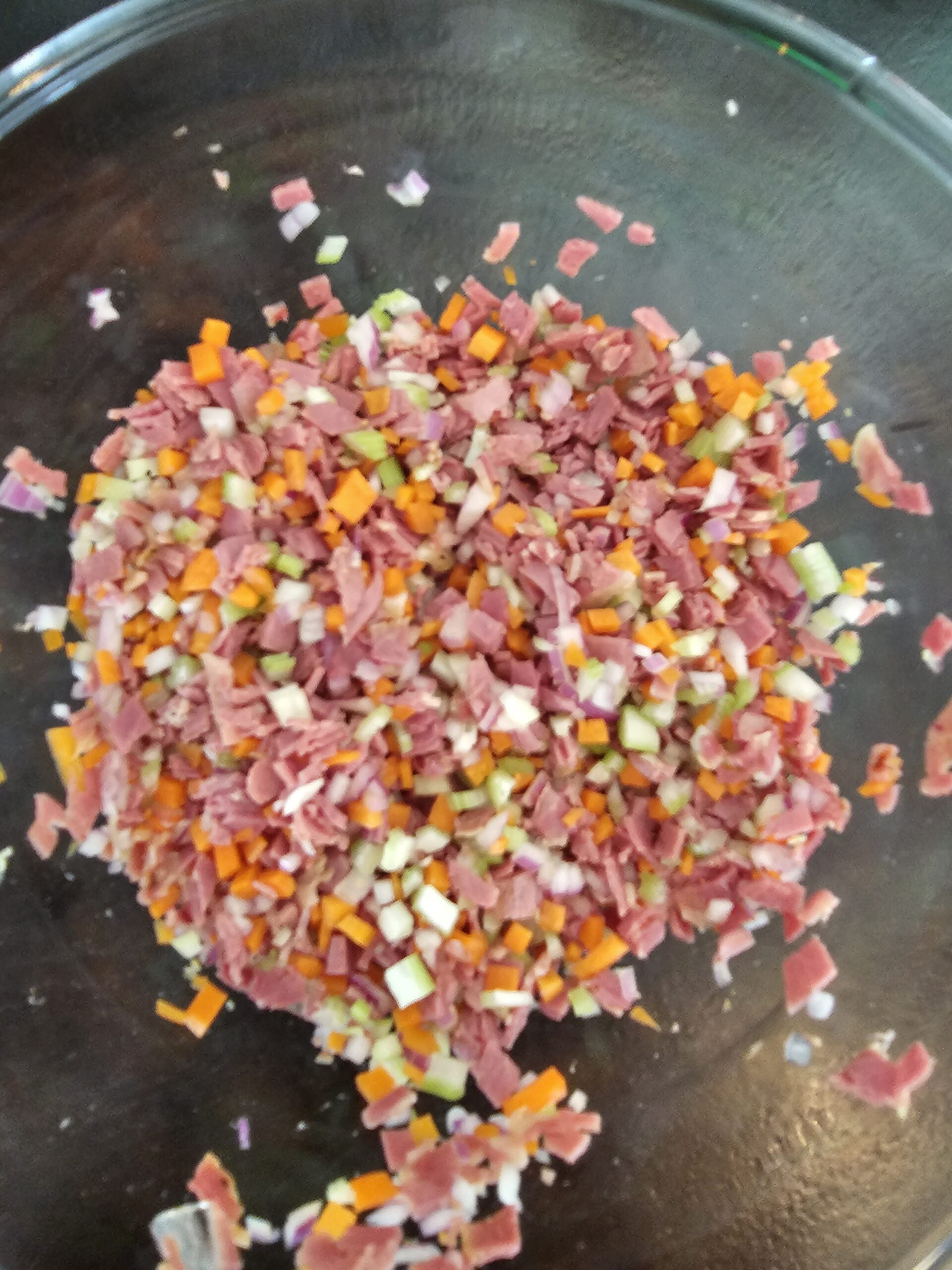 Add the ingredients in batches in order not to overcrowd. If using sausage, do not blend. Remove the casing by gently piercing the sausage and tracing the knife length-ways on both sides
Add the ingredients in batches in order not to overcrowd. If using sausage, do not blend. Remove the casing by gently piercing the sausage and tracing the knife length-ways on both sides -
Liver
Blend until smooth
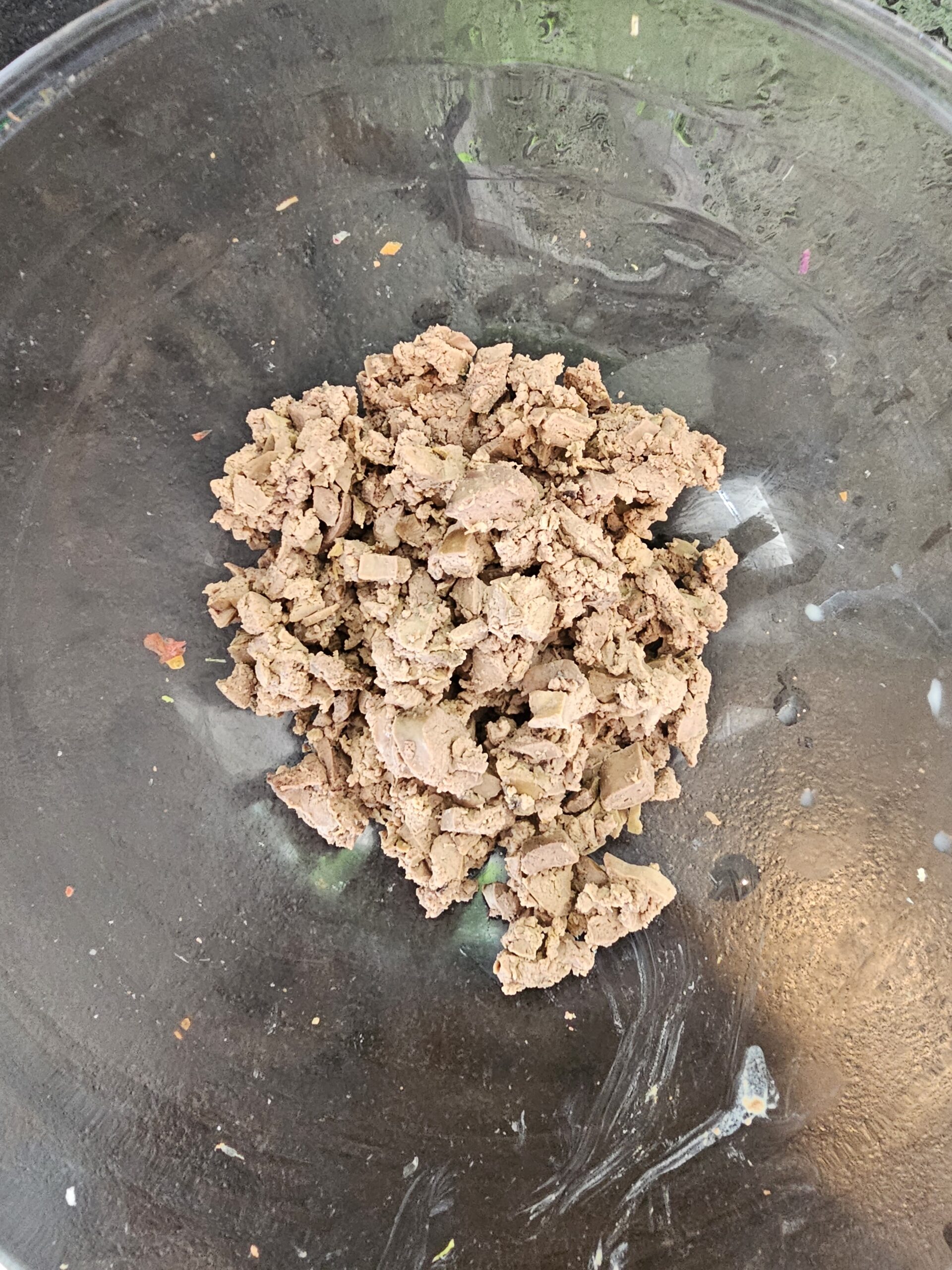 If using porcini mushrooms, soak in boiling water and let rehydrate for at least 20 minutes. Then the mushrooms to the food processor and save the liquid as stock.
If using porcini mushrooms, soak in boiling water and let rehydrate for at least 20 minutes. Then the mushrooms to the food processor and save the liquid as stock.
Ragù
-
Aromatics
Pre-heat pot to medium-low (about 1 minute)
Add extra virgin olive oil, pastrami and vegetables (and sausage
Stir often until the vegetables soften (about 10-15 minutes)
- See when all moisture has evaporated
- Hear when sizzling replaces steaming
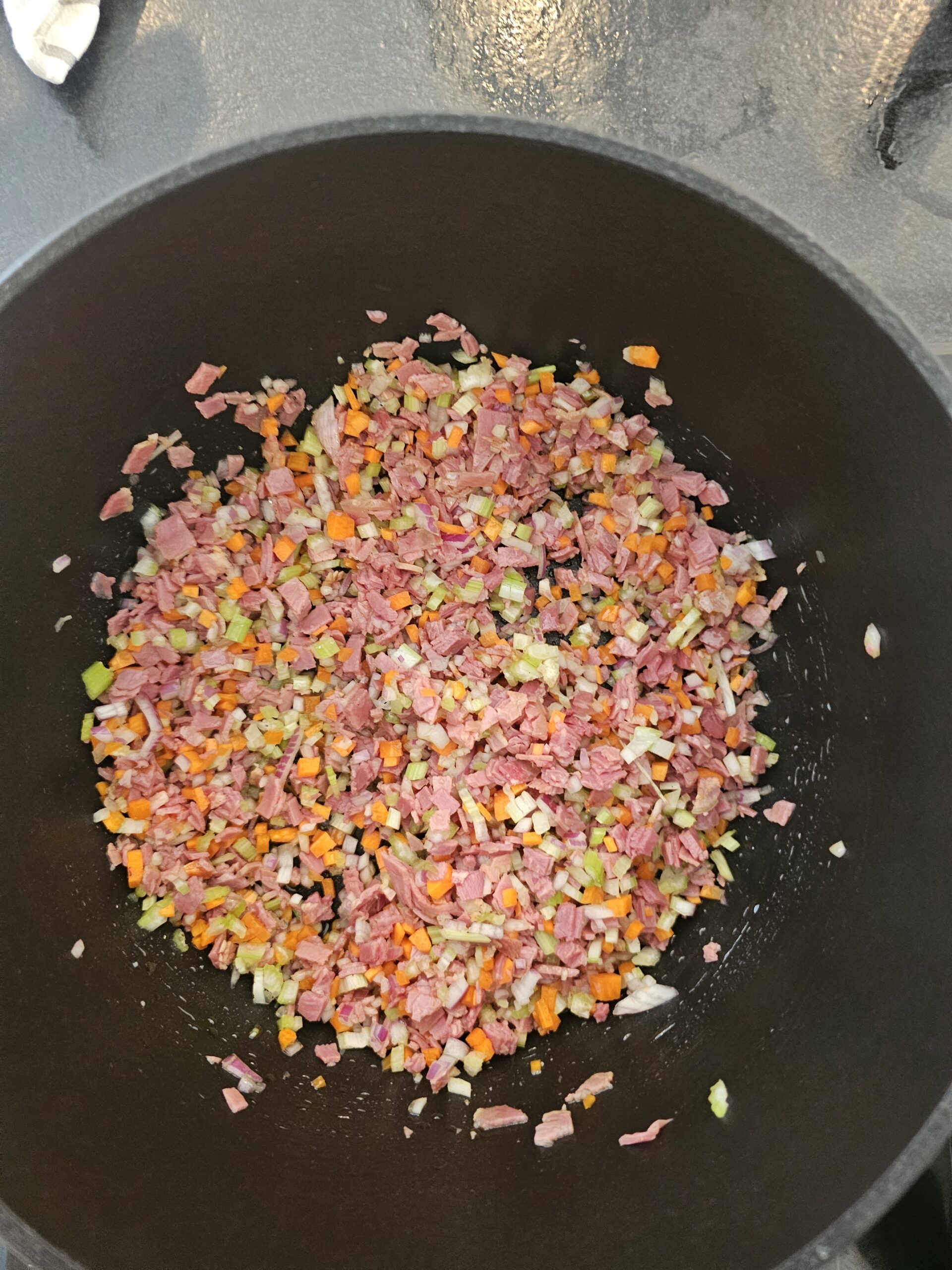
-
Beef
Add minced meat, trying to break the meat down into the smallest possible pieces
Keep stirring and breaking up the meat until the pan dries up (about 10-15 minutes)
- See when all moisture has evaporated
- Hear when sizzling replaces steaming
Let sizzle to get some browning (about 3-5 minutes)
- Smell the toasty fragrance
- No browning = no flavour
- Too brown = dry and chewy texture
Stir in tomato paste (and livers) and cook until it darkens slightly in colour (about 1 minute)
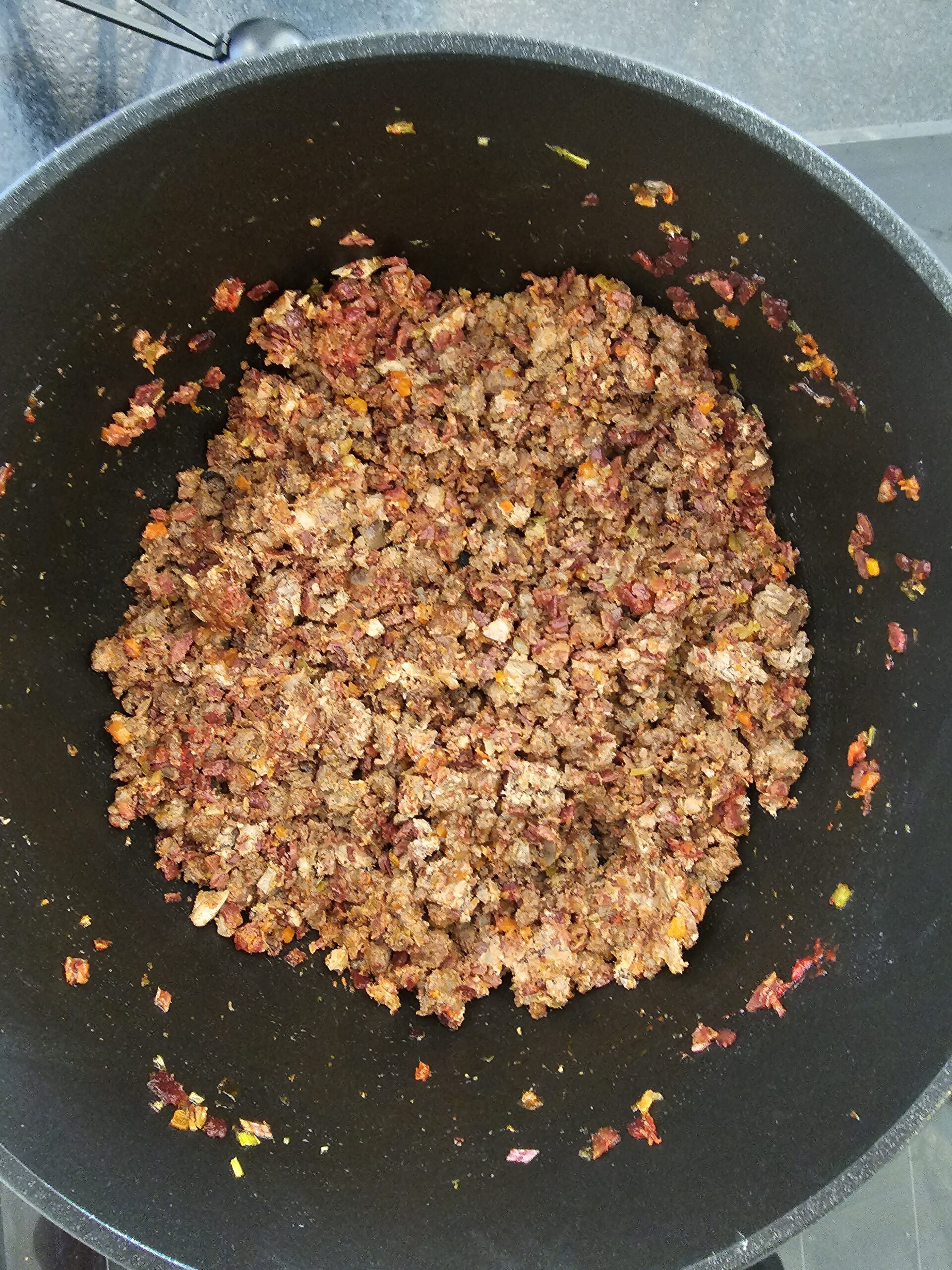 If using sausage, add with beef
If using sausage, add with beef -
Body
Add wine
Reduce until the wine is nearly dissolved into meat, stirring occasionally (about 2-5 minutes)
Add passata, milk, stock and mix
Add salt and black pepper to taste
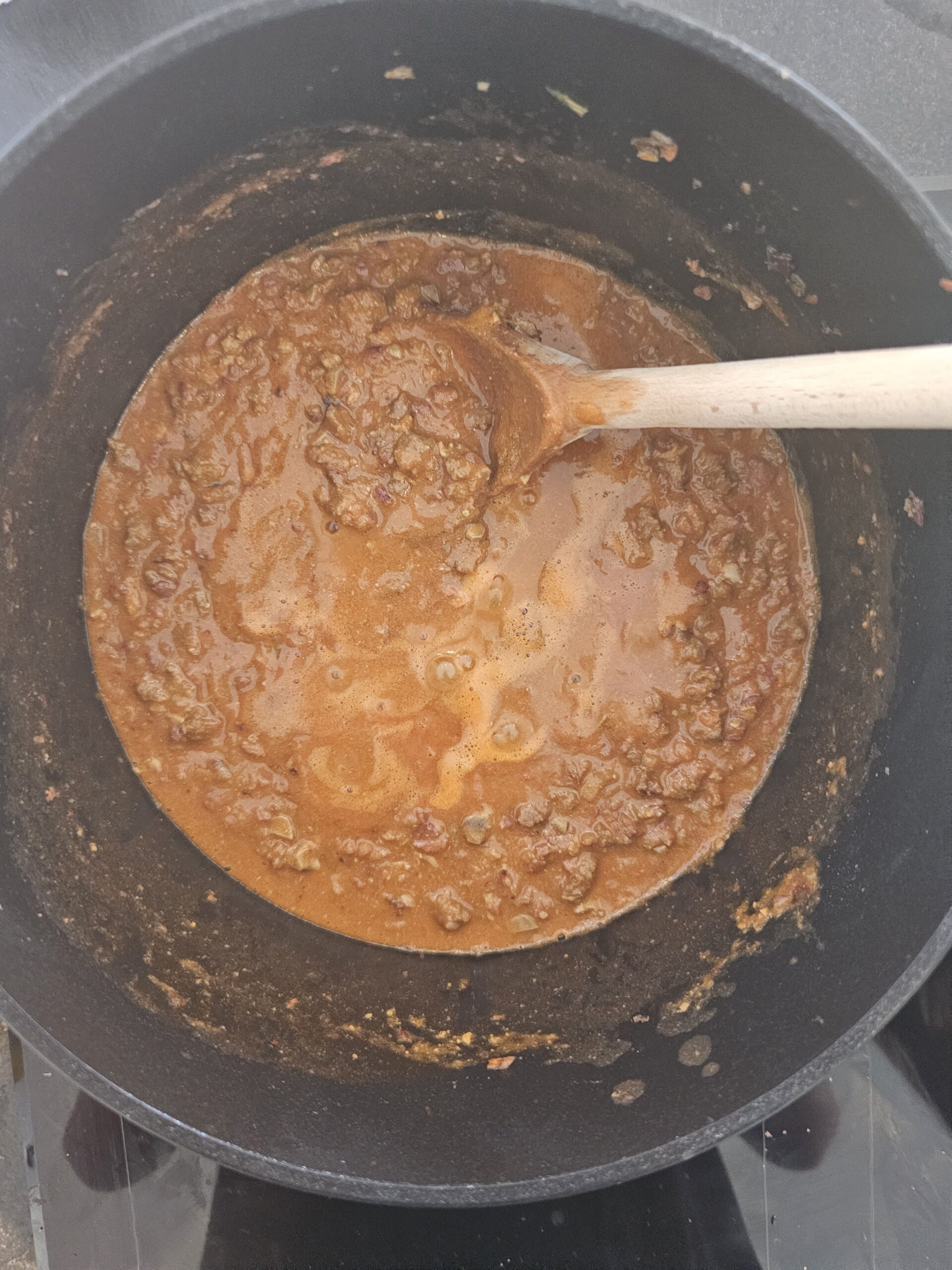 If using, the porcini mushrooms along with its liquid when adding the stock
If using, the porcini mushrooms along with its liquid when adding the stock -
Simmer
Bring to a simmer
Lower heat until bubbles lightly emerge every 2-3 seconds
Let cook uncovered for 3 hours, stirring occasionally
- Sauce should be reduced to the point that if all the meat was spooned out, the pot would have no leftover liquid)
- Add water or stock if the pot begins to dry up
- Scrape down the sides of the pot and reincorporate them back into the ragù (all the caramelised dark red stuff is homemade tomato paste and is extremely flavourful)
- Continue to taste for seasoning
-
Pasta
Add water and salt to a second pot and bring to high heat
Once boiling, add pasta and cook 1 minute under package instructions
Drain pasta, reserving a mug full of pasta water
Pasta
-
Boil pasta
Add water and salt to a second pot and bring to high heat
Once boiling, add pasta and cook 1 minute under package instructions
Drain pasta, reserving a mug full of pasta water
-
Finish
Lower heat to medium-low
Add pasta to the pot of Ragù
Mix everything gently until a sauce forms and the pasta is cooked
If the mix is too dry, add some pasta water
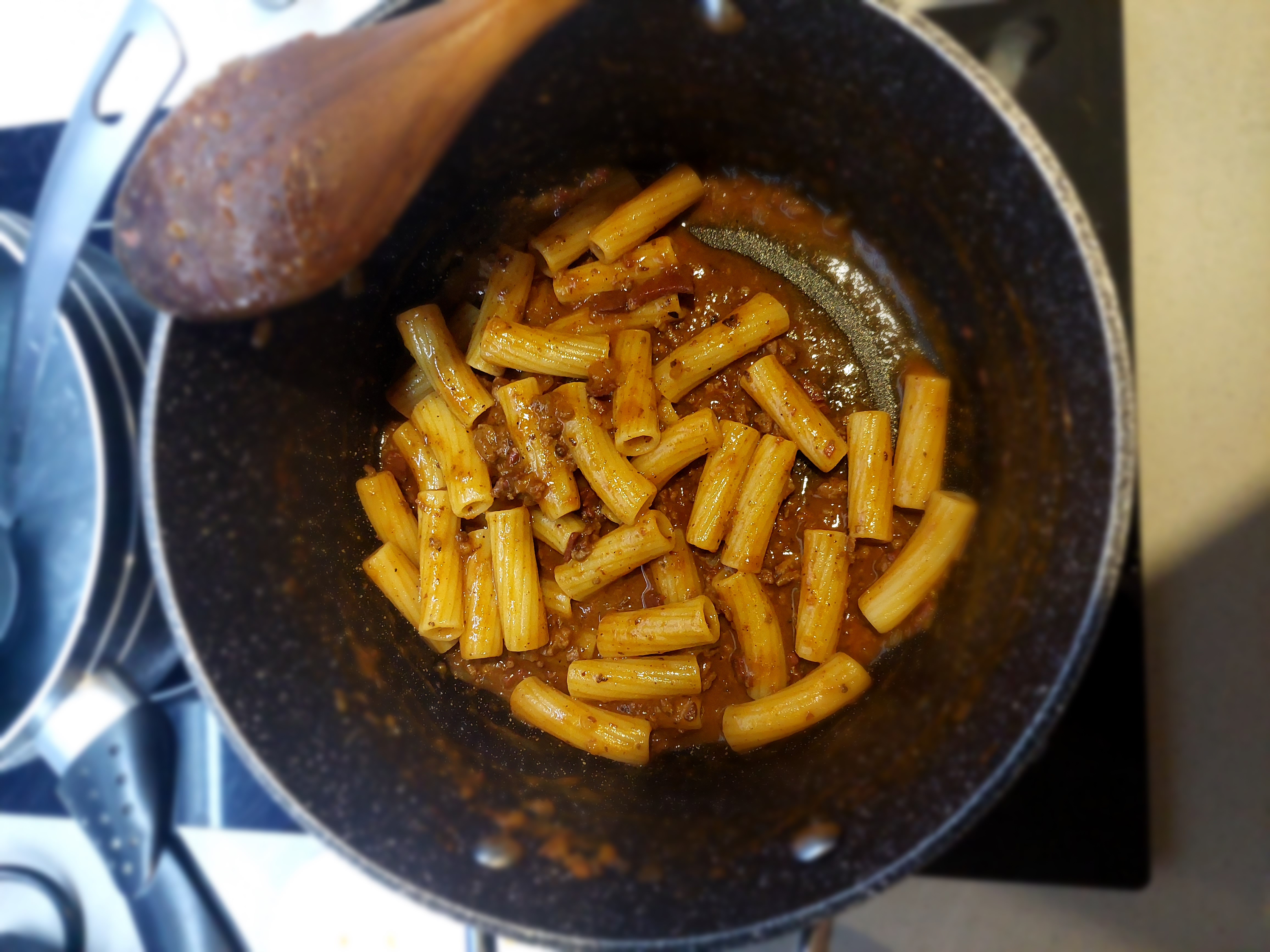
Servings 6
- Amount Per Serving
- Calories 626kcal
- % Daily Value *
- Total Fat 26.2g41%
- Cholesterol 168mg57%
- Sodium 495mg21%
- Potassium 676mg20%
- Total Carbohydrate 61.47g21%
- Dietary Fiber 4.03g17%
- Sugars 7.79g
- Protein 32.4g65%
- Vitamin A 2752 IU
- Vitamin C 10.78 mg
- Calcium 118.52 mg
- Iron 5.8 mg
- Vitamin D 1 IU
- Vitamin E 0.07 IU
- Vitamin B6 0.28 mg
- Vitamin B12 4.26 mcg
- Phosphorus 208.35 mg
- Magnesium 1.09 mmol
- Zinc 3.44 mcg
- Selenium 0.01 mg
- Copper 0.2 mg
- Manganese 0.16 mg
* Percent Daily Values are based on a 2,000 calorie diet. Your daily value may be higher or lower depending on your calorie needs.

